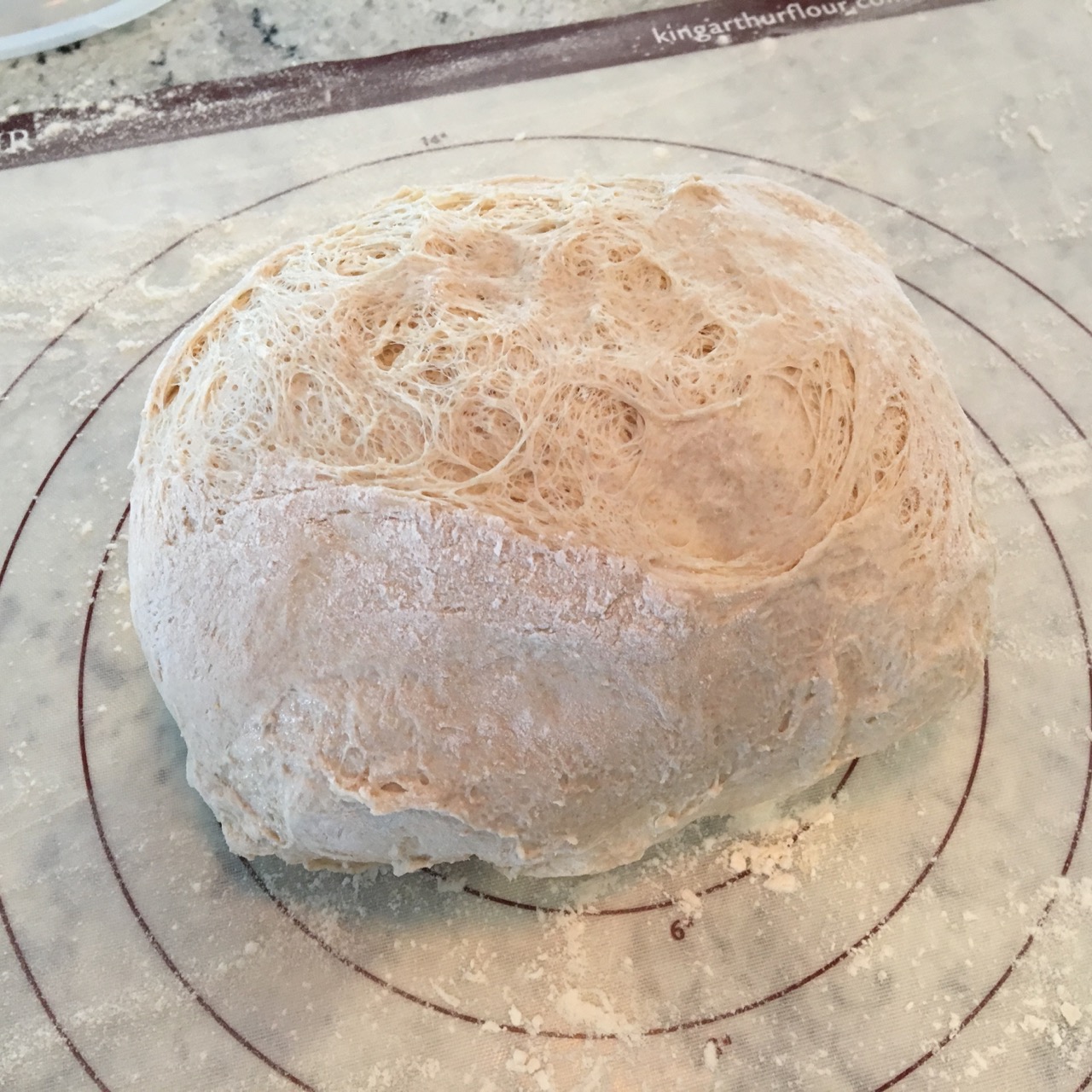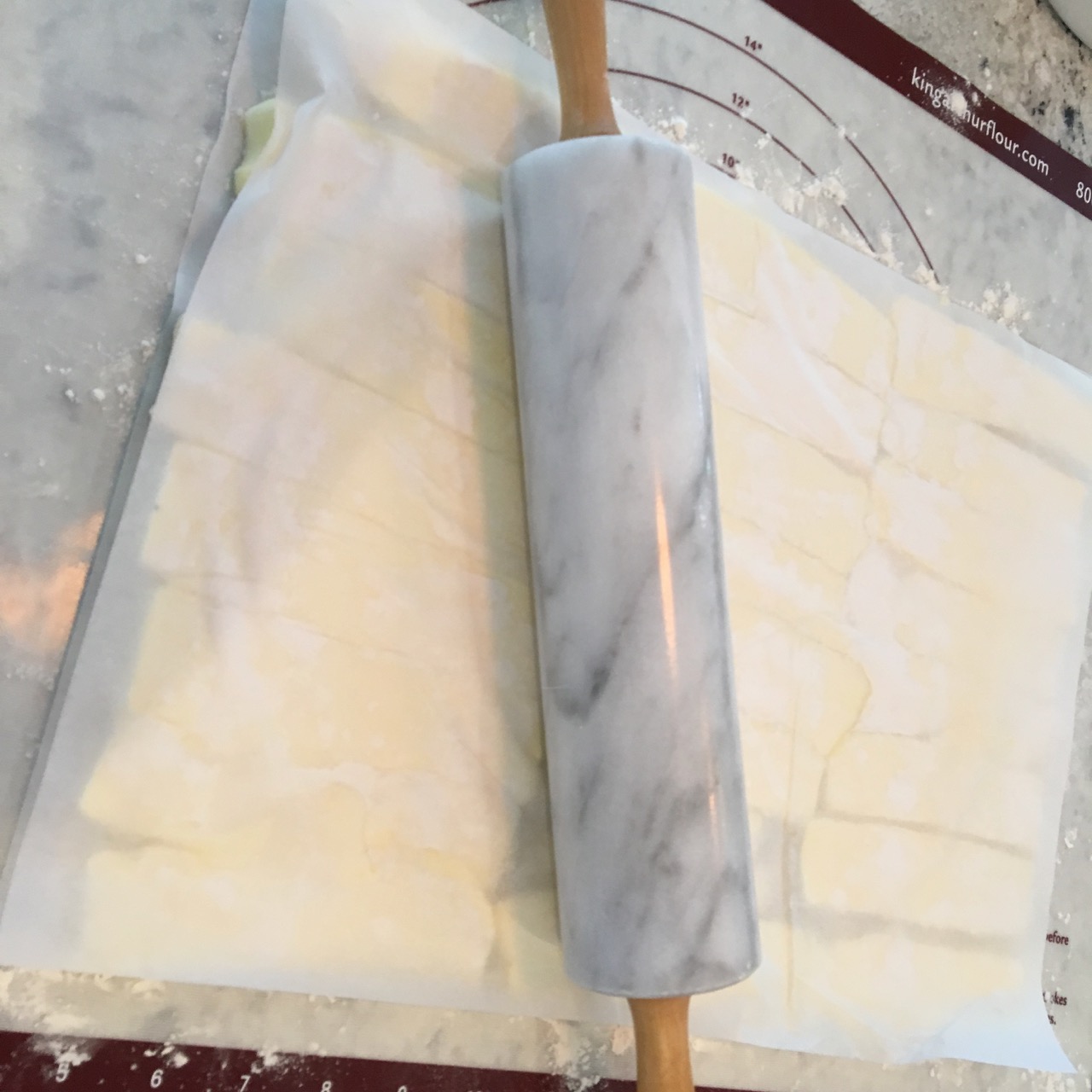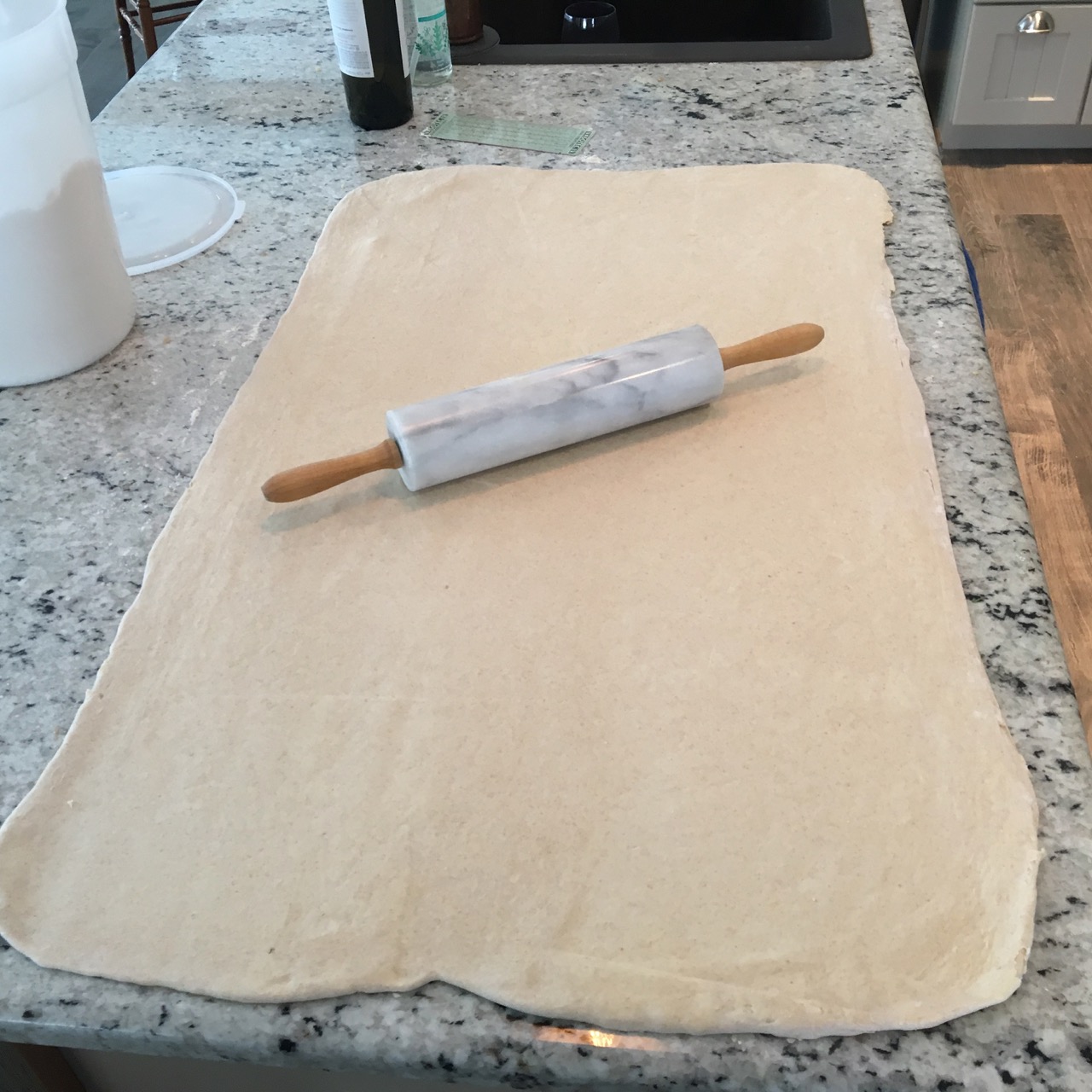We take croissants very seriously at Moss Mountain Inn, making them by hand in small batches with only the finest of ingredients. Using our sourdough starter and a bit of whole wheat adds a complexity of flavor that is unmatched.
Butter is the flavor foundation of the croissant, and it is much easier to find unsalted, organic, European style butter than it was just a few years ago. The domestic brands are fresh and vibrant. At Moss Mountain, our favorite is Organic Valley European Style unsalted sweet cream pasture raised butter.
We use a local brand of all purpose flour, Wheat Montana, which has an exceptionally high protein level (5 g per serving) with excellent results. The sourdough starter is one we started here a few years ago, fed with whole wheat and rye 1:1. Be careful not to over knead the dough in the initial mixing, as developing the gluten too early will make for poor lamination results later on. Don't worry, the gluten will develop during the folding process.
Very wet doughs are all the rage these days, but croissants laminate better with a relatively dry dough, our recipe calls for only 52% hydration. We have changed butter block techniques a number of times over the years, but old fashioned pounding out of the butter seems to give it a pliability that really aids in the lamination process. Fortunately, here in Montana, the kitchen is almost always cool, often under 70 F. We try to keep the butter in the 52-60 F range when working with it.
We prefer a croissant that is quite thick in the middle and tapers off quickly to the ends. To achieve this artisan look, keep your triangles long and skinny when shaping.
Keep in mind that this is a large batch of dough, making 24 large croissants, but you don't have to make all the croissants at once! The dough will keep in the refrigerator for several days, so just cut off as much dough as you need on a particular day. For example at Moss Mountain Inn, we might use the dough over three days, making plain croissants on day 1, chocolate croissants on day 2, and morning buns on day 3. Croissant dough freezes well, so freezing a portion of the dough for later use is an option also.
Making the croissants is typically a three day process at Moss Mountain Inn:
Day 1: In the evening, mix the sourdough starter with water and flours
Day 2: In the morning, mix up the dough, then perform folds every few hours during the day. In the evening, shape the croissants and allow them to rise, then refrigerate overnight.
Day 3: Bake the croissants for breakfast.
Patience pays off when making croissants, as allowing the process to take place over three days allows a complexity of flavor to develop that is unmatched with other pastries.



